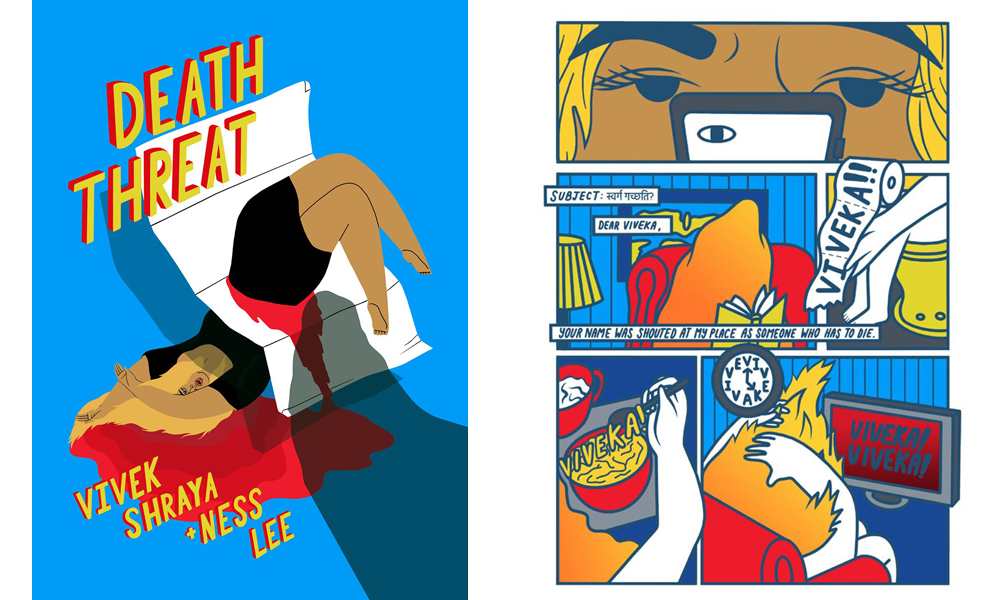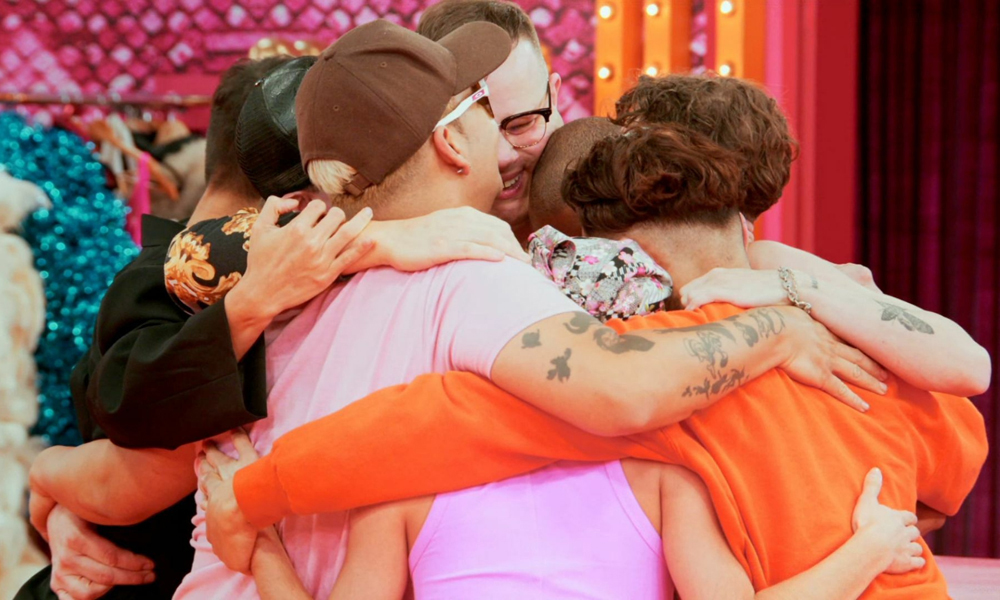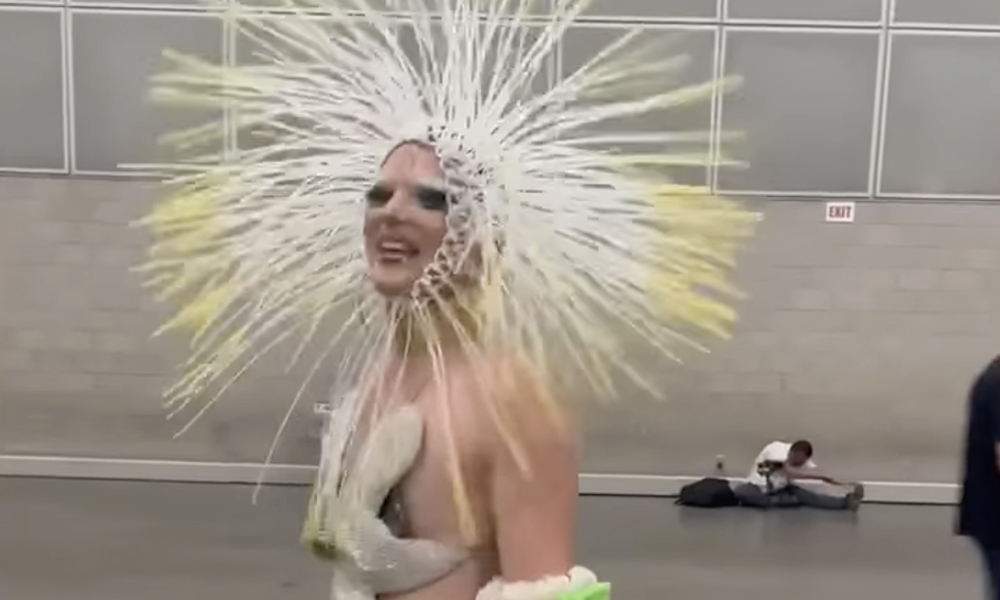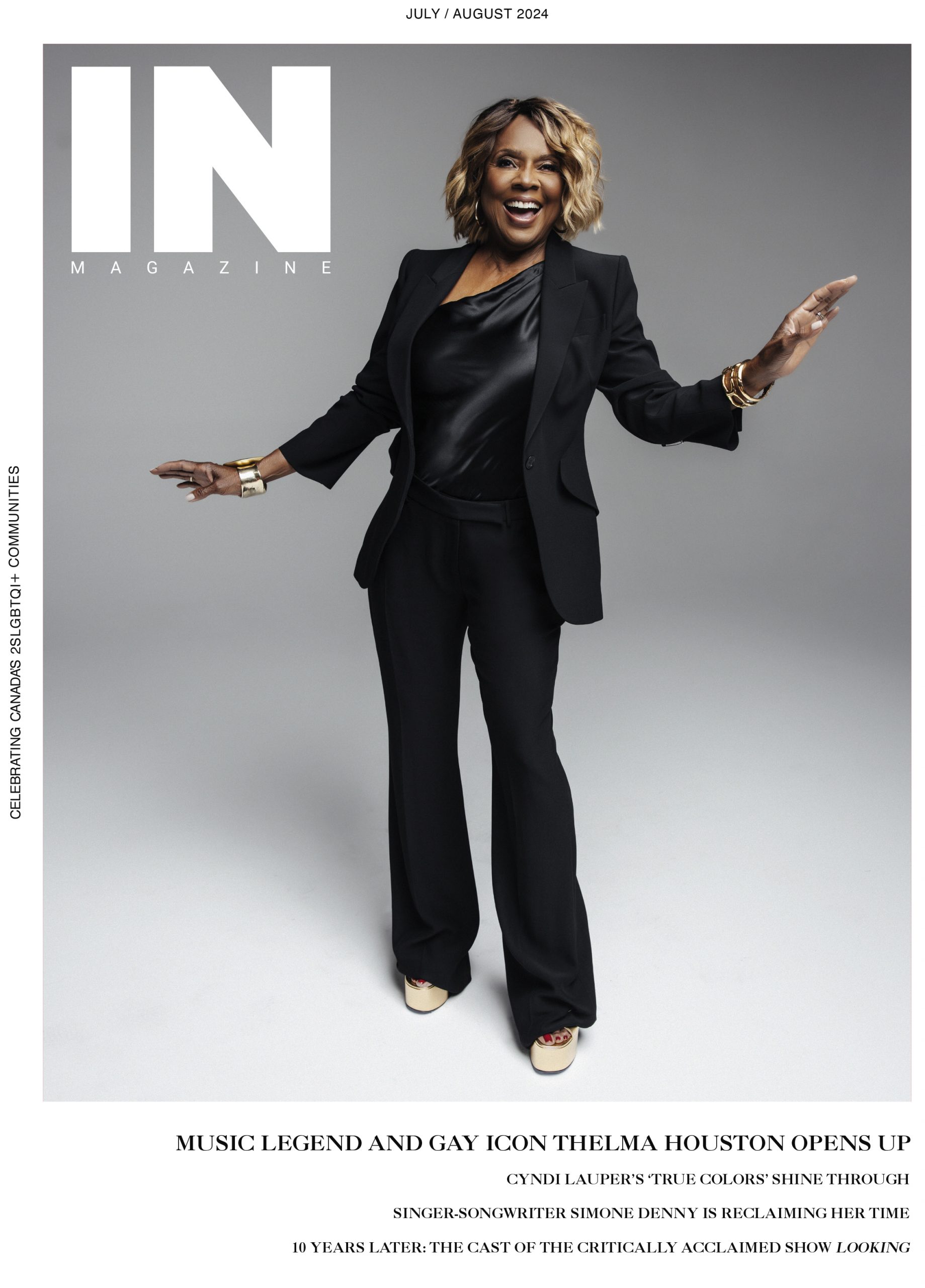The author and Canadian LGBTQ icon is back with a brand new graphic novel, Death Threat, that mirrors a scary reality from her own life…
By Christopher Turner
Vivek Shraya shot exclusively for IN Magazine by Vanessa Heins
The idea of turning hate into art is complicated, but it’s nothing new. After all, our afflictions are often inseparable from what we love. Throughout the years, countless artists have attempted to flip the script and turn pain into something more positive. Canadian LGBTQ icon and multidisciplinary artist Vivek Shraya now stands among those brave artists.
An assistant professor of creative writing at the University of Calgary, Shraya has established herself as a unique voice in Canada’s LGBTQ community through her music, art and writing. Shraya’s accolades and achievements are countless. She’s released several solo albums and has also released music as one-half of the duo Too Attached, with her brother Shamik Bilgi. Her album, Part-Time Woman, which she recorded with the Queer Songbook Orchestra, was nominated for a Polaris Prize.
But Shraya is most recognized for her writing. She has published several essays and is the founder of the publishing imprint VS. Books. She is also the author of God Loves Hair (2010), She of the Mountains (2014), even this page is white (2016), The Boy and the Bindi (2016) and the much-praised memoir I’m Afraid of Men (2018), a poetic examination of the misogyny, homophobia and transphobia she has experienced throughout her life and the cumulative damage it has caused.
It’s safe to say that Shraya hasn’t been afraid to make waves through her art. Throughout the past decade, her work has challenged stereotypes, tackled systemic racism, dissected the concept of white privilege, fought for gender nonconformity and empowered voices that are seldom heard in popular culture. Last year, when Penguin Canada released I’m Afraid of Men, it took North America by storm, contributing to an overdue cultural shift towards greater inclusivity. Grammy-nominated Canadian indie duoTegan and Sara Quin deemed the book “essential reading for everyone,” and Vanity Fair declared it “cultural rocket fuel.”
So where does one go after international media appraisal?

In May, Shraya released Death Threat, a slim hardcover graphic novel she created with Toronto artist Ness Leeand colourists Emmett Phan and Heng Tang, about the fear and the fascination she felt because of the hate and harassment she was subjected to by one internet troll in particular.
“A couple of years ago I started receiving these messages that were very disturbing,” Shraya told me when we spoke recently. “They weren’t your typical hate mail or trolling…. It was somebody saying they were chanting my name in their house hoping that I would die. They were referencing my family.”
The transphobic messages were vivid, descriptive and terrifying. Some messages were even not-so-veiled death threats. “Your name was shouted at my place as someone who has to die,” read one. Some were filled with a combination of Hindu terminology and mythology, while others fixated on Shraya’s gender. “Your mother wants to hear sweet words from you. Tell her you are not a woman,” read another.
Shraya grew up in a Hindu atmosphere where prayer and chanting is often about invoking the divine – but this was invoking for hateful purposes. “As someone who gets trolled on the internet semi-regularly, I have certain strategies in place to cope with those things where I immediately block [the person], or I don’t engage,” Shraya says. “But these messages were coming straight to my email account and they were so disturbing.”
What Shraya found most unsettling was that they were not anonymous, like so many previous online attacks. The person sending these particular messages made no attempt to hide themselves – they left their name and address at the bottom of each email.
“I found, because of the descriptive nature of the messages, that they were impossible to ignore, and I found myself thinking about them a lot. What does someone who’s chanting your name in their house, hoping you die, look like?”
When Shraya shared the messages with close friends, their response was: block, delete. But after months of struggling with the messages, her mind began to morph them into images. That’s when Shraya says she started thinking about turning those messages into something else and reclaiming the hold the predator had on her.
“It seems like the opposite thing that you should do when you receive hate mail,” says Shraya. “The common response is block, delete, as opposed to let’s make art about it.”
Experiences of hate are nothing new for many members of the LGBTQ community, and as a queer, trans woman of colour, harassment has long been an integral part of Shraya’s life. Still, even for those too familiar with hate, Death Threat is a jarring read. Of course, it’s supposed to be. Remember, Shraya has made a name for herself by tackling difficult subjects that are often pushed aside because they make us uncomfortable.

Turning lead into gold
Over the years, Shraya has written novels, short stories, poetry collections and even a children’s book, but she had never attempted to create a graphic novel before.
“I just started reading a whole bunch of graphic novels, and graphic novels are so strange – they can go to so many places.”
It seemed like the perfect medium to flip the script on the troll and turn the hateful messages into something positive. And so the process of turning the letters into a story with illustrations began. It was a way to cope with the experience. In fact, Shraya says there was something redemptive about turning hate into art.
Of course, she would need a top-notch artist to help her recreate her vision. So she thought of Ness Lee, who had collaborated with her on the artwork for Part-Time Woman.
“Part-Time Woman was such a wonderful collaboration and when I started thinking about who I wanted to work with on Death Threat, I really wanted someone who I felt comfortable with. This wasn’t going to be a graphic novel about time clocks or furniture. It had a very specific theme. It needed to be someone I have a lot of respect and admiration for.”
The timing was perfect: Lee had wanted to explore a long-form narrative for some time. Shraya says it was serendipitous.
Their collaboration is a surprisingly vibrant experience of surreal images in bright, bold primary colours (Ness has traditionally worked in black and white) that take the reader on a journey recounting not only the harassment but also the process of putting the book together. The reader flips the pages as Shraya tries to establish who the messages are from and why they seem to possess her thoughts and her dreams.
The book even explores taboo themes like victim blaming: “Maybe I had nothing to complain about. I was lucky to be loved. And doesn’t being trolled on the internet go hand in hand with being feminine?” Shraya also examines how her marginalized identity might work against her if she chose to report the individual sending her messages. At one point in Death Threat, she imagines going to the authorities, only to be told, “You probably wrote them yourself because you are obviously an attention seeker” before she is arrested for “false accusation.”
There are also subtle nods throughout the graphic novel to her own work, the Dixie Chicks, Troll Dolls and even US president Donald Trump, which help lighten the mood and distract from the disturbing messages. It was also a way for Shraya to reclaim power over the situation.
“Once I decided to turn the messages into a comic book, the last thing I wanted to do was make something that felt purely based on real events. I liked the idea of finding humour and pop culture to take away the power of these messages.”
“In a lot of ways, it’s a comic book about making a comic book.”

What kind of responsibility do social media companies have?
In Death Threat, Shraya uses her personal story to painta larger picture of hatred in our digital society, and leaves the reader to think about the dangers that lurk online. Hate online seems to come hand in hand with celebrity these days – but not just celebrities. The internet in many ways has become a dangerous place for anyone and everyone.
I mean, really, have you gone on Twitter or Facebook lately?
“I think there needs to be a broader conversation around how we encounter trolls and hate on the internet,” says Shraya.
After all, trolls are no longer just random people who, as Shraya’s character in the graphic novel says, live in their mom’s basement somewhere.
“We are all expected to be online, but there aren’t really any safety measures in place for the kind of things that have happened to me,” says Shraya. “And I’m not unique in this experience. There’s just not a lot of protection for anyone.”
Even those who avoid the dark corners of the internet can expect to encounter hate while surfing the web or browsing through the most mainstream social networking sites. In the first quarter of 2018 alone, a Facebook spokesperson says, the company took action on 2.5 million pieces of content that had been classified as hate speech. But that’s just the tip of the iceberg, since hateful messages obviously are still easily getting through.
It goes beyond hurt feelings and fear: even though hate speech seems to be largely ignored, it’s a big problem because encountering hateful speech can skew attitudes. Researchers have long warned that dehumanizing people is a tactic that goes hand in hand with oppressing them, because it helps create mental distance between groups.
It can become an endless, dehumanizing cycle for the victim that can take a toll on their well-being and mental health. But for some reason most of us turn the other cheek.
So what should you do when you encounter hate speech on the internet? “You can report, but that doesn’t prevent someone from simply trolling someone else,” warns Shraya.
“I don’t have a solution per se, but I do think we need to be putting more pressure on these sites – that we have given a lot of our personal information and time to – to protect us. I think the least that Twitter or Instagram or Facebook or any of these sites should be doing is making sure that we can be in these spaces and be more protected beyond blocking or reporting,” says Shraya. “Because it feels like those gestures fall short if individuals who are blocked are still able to do it to someone else.”
“A big part of taking on this project was obviously for selfish reasons in terms of coping, but another part was to instigate and be part of this broader conversation on how do we reimagine the internet as not just a harmful place.”
If anyone has the answer, let us know.
Death Threat by Vivek Shraya and Ness Lee is available online and at select bookstores now.
—
CHRISTOPHER TURNER acted as guest editor for this issue of IN Magazine. He is a Toronto-based writer, editor and lifelong fashionisto with a passion for pop culture and sneakers. Follow him on social media at @Turnstylin.






Comments
2 Comments